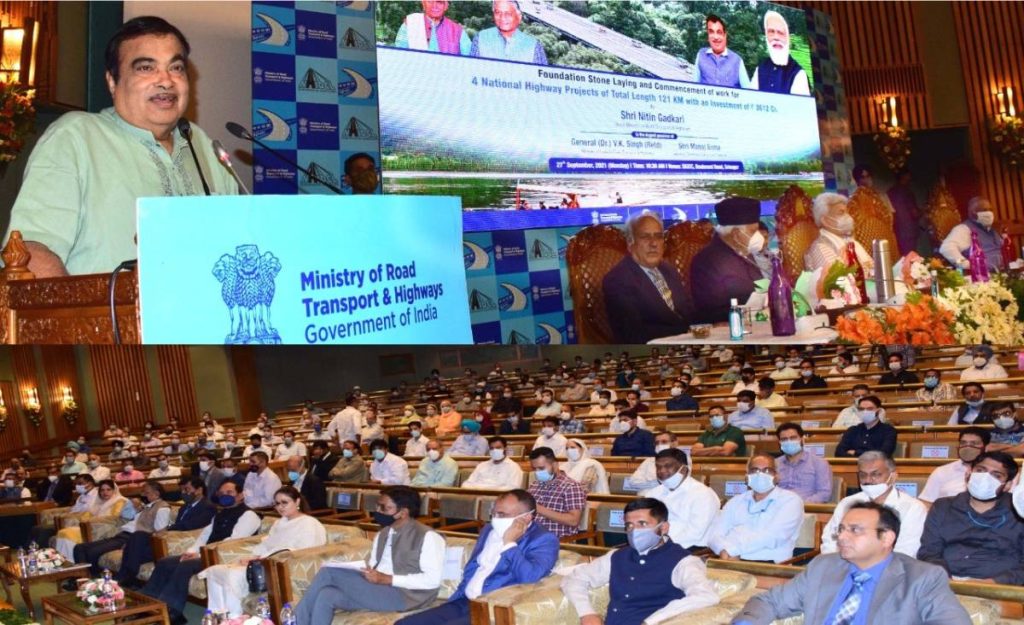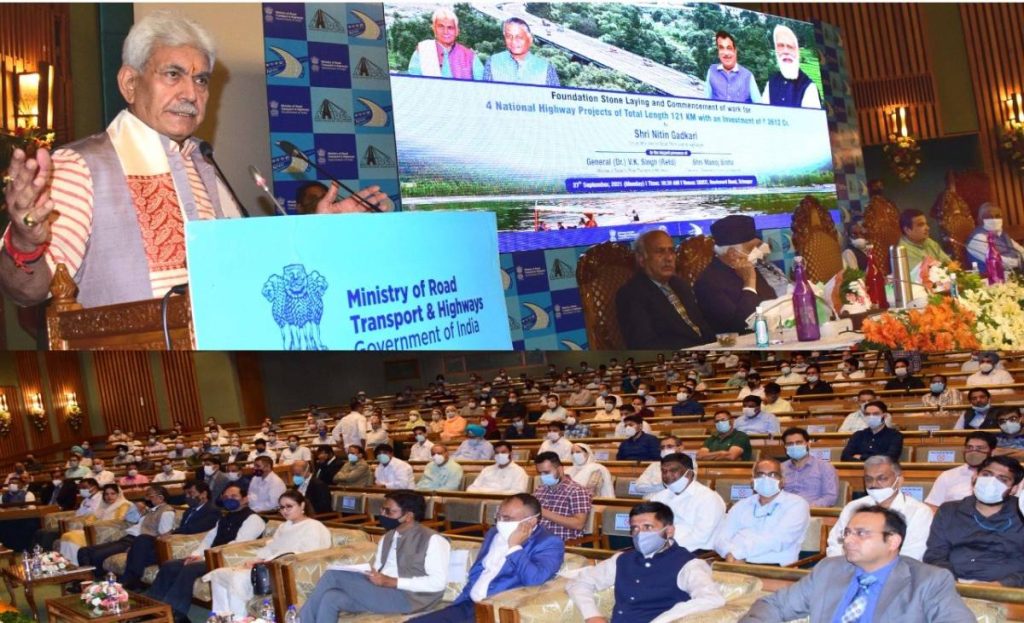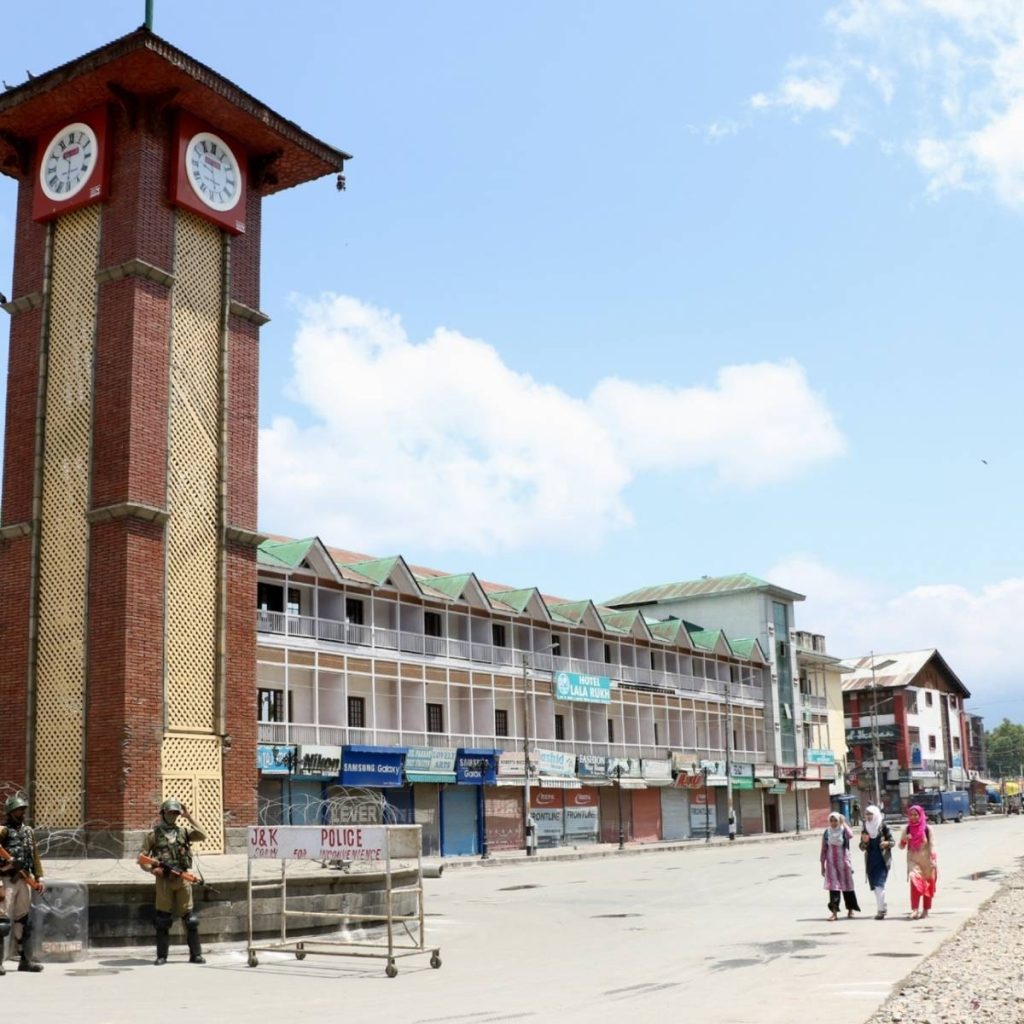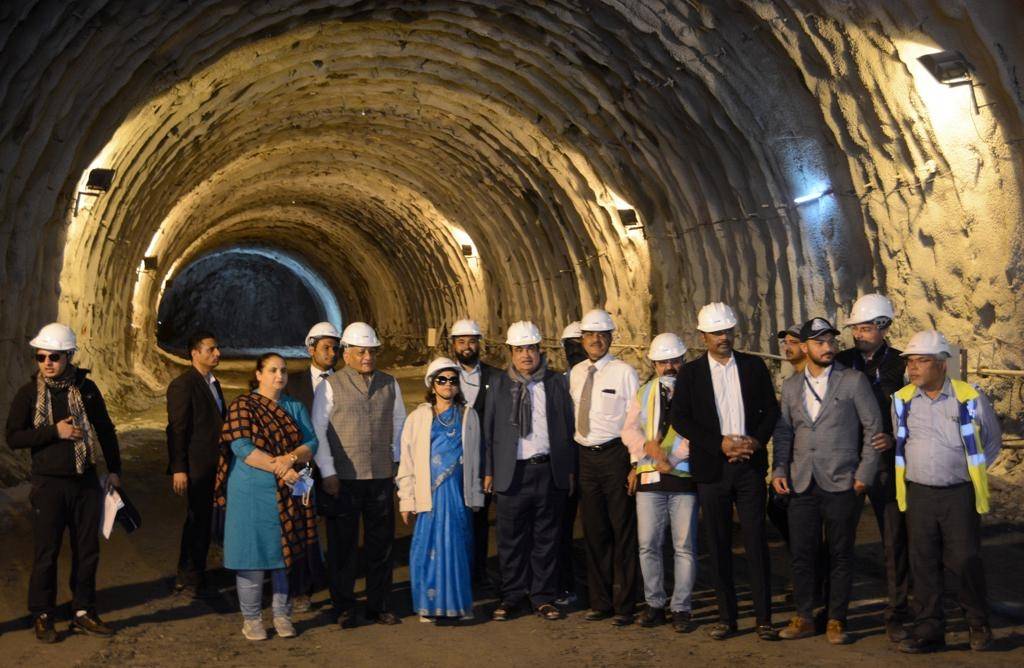Till 2014, there were only seven National Highways in the erstwhile Jammu & Kashmir, including Ladakh but in 2021 J&K alone has eleven National Highways…reports Asian Lite News
The process to build ‘Naya Jammu and Kashmir’ commenced much before August 5, 2019 — when New Delhi announced its decision to abrogate J&K’s special status and divided it into two union territories. After the change of guard in the Centre in 2014, the dispensation led by Prime Minister, Narendra Modi, focused on reaching to the root causes of the problems in J&K.
The government identified lack of proper road connectivity as one of the major issues that needed to be addressed. Just within a year, i.e., in 2015 the Prime Minister announced road infra projects worth Rs 40,900 crore for J&K, out of which work on projects of about Rs 38,000 crore is already underway. Till 2014, there were only seven National Highways in the erstwhile Jammu & Kashmir, including Ladakh but in 2021 J&K alone has eleven National Highways.
To give impetus to the ongoing development works Union Minister of Road Transport and Highways, Nitin Gadkari, and J&K Lieutenant Governor Manoj Sinha laid the foundation stones for four National Highway projects worth Rs 3,612 crore in the J&K UT on September 28, 2021.

Gadkari, who was on a 2-day visit to J&K in connection with the Centre’s outreach programme, stated that there was no dearth of funds. He assured that every possible logistic support would be provided to the J&K Government to overcome the challenges in building new highways and roads.
“The new projects will further strengthen the road connectivity in J&K. It will open up new livelihood avenues for the local population, enhance tourism and business activities and improve the quality of life of the people,” he said.
The Minister stated that the government is working on a comprehensive plan to lessen the travel time between the cities. “Be it Delhi-Jammu, or Jammu to Srinagar, the time to travel would be reduced to half by providing expressways and better road connectivity to the people. Mega highway road and tunnel projects will reduce the travel time from Delhi to Kashmir to 8 hrs in coming years,” he announced. (1)
Road connectivity has remained a major issue for Kashmir since 1947. The 300 kilometre Jammu-Srinagar National Highway, only all-weather road connecting the Valley with the rest of the country, has been the most unreliable highway. Its frequent closure, especially during the harsh winter season leads to shortage of everything, including the essential commodities, but during the past seven years work on this highway has been expedited and it’s likely to become a four lane express highway within two years.
At present the National Highways Authority of India (NHAI) is working on the ‘treacherous’ terrains on Jammu-Srinagar National Highway. The 36 kilometre long Ramban-Banihal stretch is full of ‘trouble points’. This stretch was realigned and the work on it is likely to get completed by December 2024. The danger points, including Marog, Panthial, Khuni Nullah, Digdol, and Battery Chashma, have been bypassed after realignment. To avoid landslide-prone and sinking areas, tunnels and bridges are being constructed as per realigned project (2).
Work on the widening of the Jammu-Srinagar National Highway had started in 2011. Two major tunnels, Nashri tunnel and Banihal-Qazigund tunnel, have been thrown open for the general public and this has reduced the travel time and distance between Jammu and Srinagar. Four laning work from Srinagar to Qazigund and from Jammu to Udhampur was completed long ago. The NHAI is hopeful about completing the remaining work within the stipulated time.

New highways in Jammu region
Earlier this month, the Union Ministry for Road, Transport and National Highways had approved two projects worth Rs 2,556.36 crore on the Samba-Jammu and Akhnoor-Poonch National Highways.
The ministry had also approved development work of the Jakh (Vijaypur)-Kunjwani section of National Highway-44 to six-lane Expressway. Jakh-Kunjwanifalls on Samba-Jammu road and is part of the Pathankot-Jammu National Highway. which is presently four-lane.
The ministry had also approved Rs 734.64 crore for work of rehabilitation and upgradation to two-lane with paved shoulders from existing chainage, including the construction of Bhimber Gali Tunnel under 31 TF on Akhnoor-Poonch road (National Highway 144A).
Prior to this the Central Government had already approved widening of Jammu-Akhnoor road followed by Akhnoor-Poonch road via Nowshera and Rajouri.
Zojila and Z-Morh tunnels
Srinagar-Leh National Highway remains closed nearly four months during winter due to heavy snowfall at Zojila, but the under construction 13.2 kilometre Zojila tunnel would provide all weather connectivity to the union territory of Ladakh. It will be India’s longest road tunnel and Asia’s longest bi-directional tunnel.
Several bridges are being constructed along this route. The Z-Morh tunnel is being constructed in the Zojila Ghats between Sonamarg and Kargil. The entire work is divided into two divisions in the 33 km span.
The project site of Zojila tunnel is located at existing highway (NH-1) starting from Sonamarg (UT of J&K) and ends at Minamarg (UT of Ladakh) at an elevation ranging from 2700m to 3300m, thus making the Zojila Tunnel the longest tunnel at this elevation in Asia. The present site location falls into seismic zone IV and all precautionary measures have been provisioned to safeguard the structures in the project.
According to Brigadier Gurjeet Singh Kamo, executive director, National Highways and Infrastructure Development Corporation (NHIDCL), work at Z-Morhtunnel is expected to be over by next year against the target of December 2023 while the Zojila project would be over by 2026.
During his recent visit to the tunnel, Gadkari described Zojila tunnel as a landmark project (3).
Earlier Gadkari had stated that a hill station, more enchanting than the world-famous Davos in Switzerland, is being planned in the picturesque landscape between the 18-km stretch of Zojila tunnel in Ladakh and Z-Morh tunnel. Once the project is completed it will change the dynamics of both Ladakh and J&K and create huge employment.

Mughal Road
This 84-kilometre long road which connects Kashmir with Poonch district in Jammu was opened in 2009 for light motor vehicles. However, it remains open only in summer months.
When it was thrown open for public, politicians in Kashmir had termed it as their “dream project” and had promised the people that it would serve as an alternative all-weather road for the Valley. However, not much headway was made in this regard even 10-years after it was thrown open for the public. In December 2019, the National Highways and Infrastructure Development Corporation Limited engaged a Spanish Consultancy firm and an Indian private consultant to prepare a report for the construction of a tunnel near Peer-Ki-Gali which receives massive snowfall during winter.
It is a historical route and is known for its beautiful sights and scenes, which can persuade the tourists across the country to visit this area. It is surrounded by snow laden mountains which glitter like silver throughout the year. The work on this road is all set to be expedited in coming months.
In 2020-21, 3300 km rural roads were constructed
In 2020-21, a record 3,300 km of roads were constructed in remote areas of Jammu and Kashmir. The purpose of these roads was to provide safe and secure all-weather connectivity to far-flung areas across the Union Territory.
Former J&K Chief Secretary B.V.R. Subrahmanyam in May this year had stated that most of the work was undertaken under the flagship programme ‘PradhanMantri Gram Sadak Yojana’ (4).
Addressing the issue of road connectivity to Kashmir is a leap towards bringing the Valley closer to New Delhi and the government is working on it. The projects that have been undertaken during the past seven years have helped in changing the ground situation in Jammu and Kashmir. People too have responded positively and have boarded the bandwagon of peace, prosperity and development.

